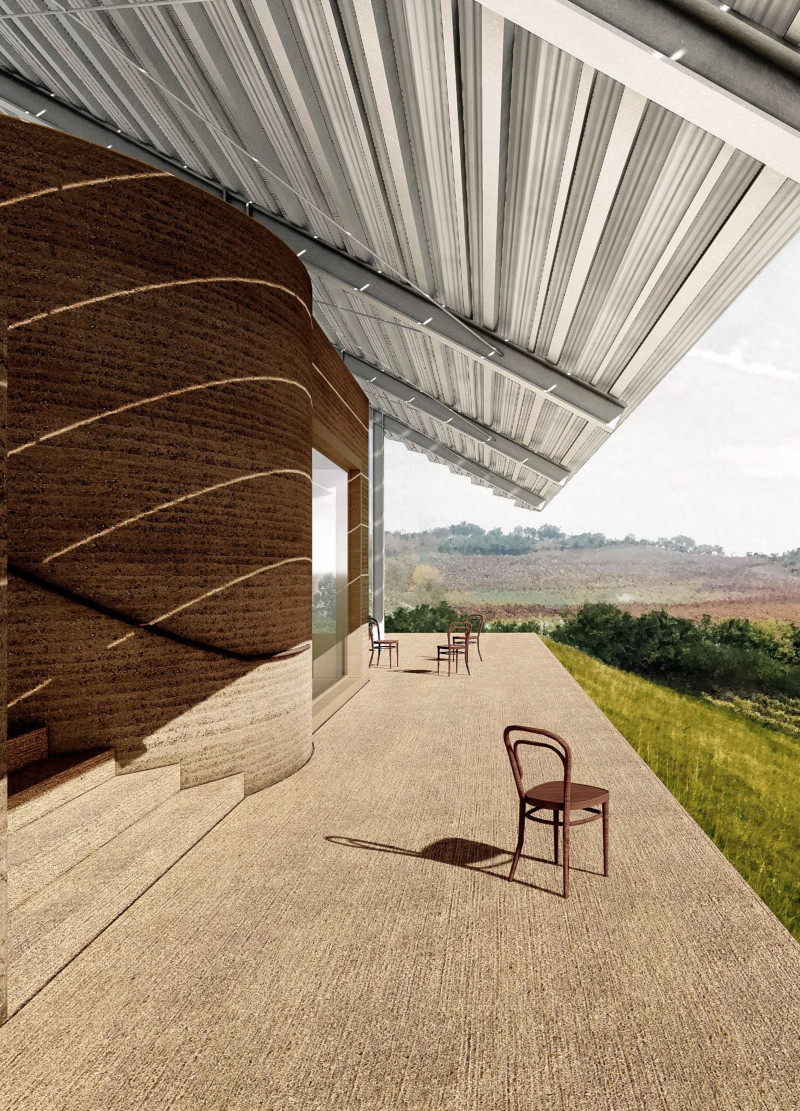5 key facts about this project
Quinta Do Monte D'Oiro is a family-run winery located near Lisbon, Portugal, surrounded by extensive vineyards that characterize the area. The design concept blends the built environment with the natural landscape, creating a space that enhances the visitor experience while honoring the local culture of wine production. The structure serves both practical and aesthetic functions, inviting visitors to explore and enjoy the site.
Structure and Form
The winery features a low-profile design that fits comfortably within the surrounding terrain. An industrial gable roof frames the earth landscape, establishing a visual connection with the vineyards. This design respects traditional structures in the region while making a unique statement in its own right.
Materials and Construction
Rammed earth plays a key role in the construction, establishing a connection to the soil from which the wine is produced. This method not only draws from historical practices in the region, but also ensures effective temperature regulation inside the building. The use of rammed earth highlights the importance of the local environment, embodying the idea of terroir, or the unique characteristics of the land.
Visitor Engagement
The layout encourages interaction for guests, inviting them to walk along a pathway made of rammed earth that leads to the entrance. This pathway creates a sense of anticipation, allowing visitors to immerse themselves in the landscape before entering the tasting room. Inside, the slightly lowered floor connects visitors to the earth, while framed views of the surrounding vineyards provide enjoyable perspectives without taking focus away from the wine.
Spatial Dynamics
The design supports different ways for visitors to connect during gatherings and events. By using the slope of the site, the architectural form creates varied elevations that enhance the overall experience. Each transition through the space offers a new perspective, drawing attention to the relationship between the building and its natural setting.
The tasting room captures this spirit, offering beautifully framed views of the vineyards that feel like living art. These carefully composed vistas enrich the atmosphere and deepen the visitors' connection to the landscape surrounding the winery.
























































